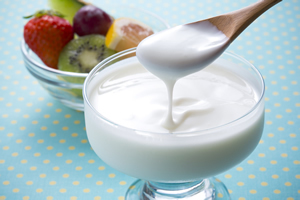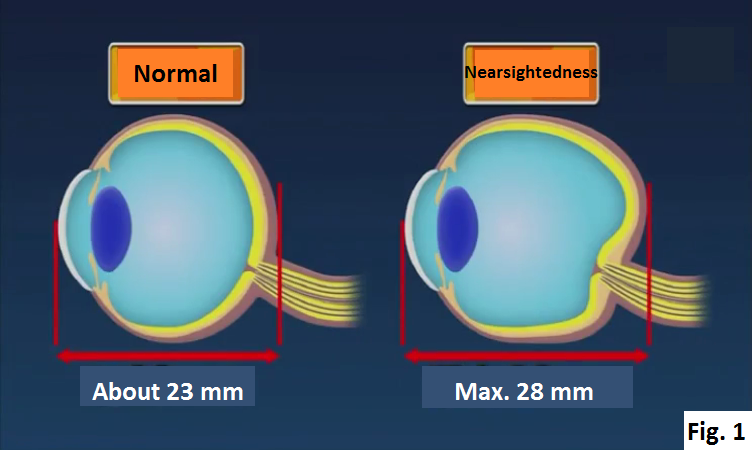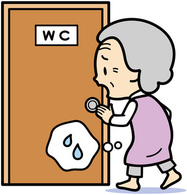|
At present, there are about 65 thousand of over 100 years old people in Japan. The following is Top 5 replies when 100 of over 100 years old people were asked about the ingredients they eat more than 3 times a week in a survey in Japan.
5. Cabbage According to National Cancer Institute in U.S., cabbage is effective to suppress cancer because it is rich in vitamin C. Cabbage also prevents pneumonia because of the ability to repel viruses. They tend to eat cabbage putting in a soup. Cabbage contains phytochemical. Phytochemical is easily extracted when put in a soup and by boiling vegetables, the absorption rate becomes higher. 4. Salmon Salmon contains a substance called astaxanthin which is effective to prevent hardening of blood vessels and diabetes. Astaxanthin has strong anti-oxidant action (anti-aging effect) which is about 6000 times as strong as vitamin C. Astaxanthin is also rich in other red sea food such as shrimp, crab, salmon roe or sea bream. The redness of tuna is not astaxanthin but iron. 3. Chicken 2. Tofu 1. Pork Pork contains 10 times as much vitamin B as beef. To obtain the same amount of vitamin B, if you eat pork, you need to eat 100 grams (3.5 oz), but if you eat beef, you need to eat 1 kilograms (2.2 lb). Vitamin B is required to maintain the function of brain’s metabolism so it is better to eat pork instead of beef to maintain cognitive function (Fig. 1). The amount of vitamin B contained in pork is very large compared to the other ingredients known as containing a lot of vitamin B. Our physical strength and immune becomes weaker with age. Over 70 years old people need to take more protein than high school students and other adults. Eating pork develops the physical strength and strengthens the immune system. Eating meats has another effect. The strength of chewing is related to the strength of the lower body. So people who can bite off meats can strain the lower body.
0 Comments
There must be a lot of people who refrain from snacks because they don’t want to gain weight. If you pay attention to SOMETHING, it is possible that you don’t gain weight even if you eat snacks.
Our body has a rhythm. We sleep at night, wake up in the morning and carry out activities in the daytime. Without taking meals in accordance with the rhythm, we can’t maintain our health. It is called Time Nutrition Science. The way not to gain weight with eating snacks is paying attention to the time you eat snacks. Our body is equipped with Biological Clock that an innate mechanism of the body that regulates its rhythmic and periodic cycles, as that of sleeping and waking. Using this mechanism, you don’t gain weight if you eat meals at the time when is hard to gain weight. In the field of Time Nutrition Science, a substance is attracting attention. The substance is Bmal 1 that is a type of protein. By the action of Bmal 1, fat is made synthetically from the energy of food. The action of Baml 1 gradually increases from 4 pm and the peak time is midnight and the action gradually decreases in the morning. People consume the energy by the activities in the daytime and try to store the energy during the night to do activities the next day. Bmal 1 controls this mechanism. Bmal 1 starts to be active at 4 pm and the activity peaks late at night. On the other hand, Bmal 1 is not active around noon time. Therefore, if you eat snacks between 10 am and 3 pm, you are unlikely to gain weight. There is an experiment about the relationship between time to eat and weight gain. Which do you think easily gains weight? 33 female college students ate 3 meals a day which had 500 kcal per meal according to the following time schedule. Morning Type: 7 AM, 1 PM, 7 PM Evening Type: 1 PM, 7 PM, 1 AM As a result, the generated energies with the meals at 1 PM and 7 PM were almost the same, but the generated energy with the meal at 7 AM was 4 times more than the one at 1 AM (Fig. 1and 2). This means that 3 quarters which was not generated as energy (heat) became fat. Even if you have same meals, if you have it in the morning, it becomes your energy, but if you have it at midnight, it becomes fat. By the action of Bmal 1, the meal taken late at night easily becomes fat. When you want to eat snacks, eat them between 10 am and 3 pm if you don’t want to gain weight. The Difference between people who tend to have a migraine headache and people who don’t is…10/27/2016 whether or not the blood vessel in the brain is easy to become wider.
The blood vessel is wound by the nerve which works as a sensor. Normally there is a space between the blood vessel and the nerve. In the case of migraine headache, the blood vessel becomes wider and stimulates the nerves winding around the blood vessel (Fig. 1). The blood vessel is an artery so it is pulsating. That makes you feel pulsating pain in the head. What makes the blood vessel wider? (1) Weather When the weather is nice, the blood vessel is contracted by proper atmospheric pressure. In this condition, there is no headache because the nerve is not stimulated. On the other hand, when the weather is bad, the atmospheric pressure lowers down, lowering the pressure in the head. That makes the blood vessel wider and stimulate the nerve, causing headache. (2) Smell The stimulation of strong smell such as cigarette’s smoke or perfume stresses the body. The brain is excited by the stress and increases the blood flow, making the blood vessel wider and causing headache. (3) Too much sleeping Usually when you sleep, the blood vessel gradually becomes wider by relaxation. But if you sleep too much, the blood vessel becomes too wide, causing headache. (4) Hunger When you feel hungry, your body tries to get more nutrition, widening the blood vessel and causing headache and irritation. So people who easily get angry tend to have migraine headache. When there is a migraine headache, the blood vessel is wider so it is good to cool it down to shrink the blood vessel. Putting a cold towel on the area where you feel the headache is effective to alleviate the pain. If you have dry and rough skin on your heel, it can be athletes’ foot.
If the cause of dry and rough skin on the heel is athlete’s foot bacteria (tinea fungus), it is not cured by shaving off the skin or moisturizing the area by applying cream. Unlike usual athlete’s foot, it is not itchy so it spreads out to all of the bottom of your foot before you notice, and cracking of the skin appears, sometime resulting in inability to walk due to pain. If the dry and rough skin on your heel gets worse in summer which is not a dry season or moisturizing cream doesn’t work, there is a high possibility of athlete’s foot on the heel. Athlete’s foot is caused by a fungus that grows on the skin. It spreads out from the feet of a person who has the fungus. The fungus likes a place where is hot and humid such as floors near swimming pools or in the locker rooms. You can get the fungus through a nail cutter or pets. But the prevention is easy. Wash your feet once a day. Even if you come back home with getting the fungus outside, if you wash your feet within 1 day, you will not be infected by the fungus. It takes about 24 hours until you are infected by the fungus. The important point to wash your feet is washing between 4th and 5th toes carefully because the fungus tends to attach to the part. It is said that eating yogurt is good to harmonize the environment of the intestines and to strengthen the immune system. What is necessary to know when you eat yogurt?
Eat 300 grams (11 oz) per day To increase good bacteria in the intestines by eating yogurt, 300 grams of yogurt is necessary to eat a day. So it is recommended to eat yogurt not only once a day but a few times a day. Eat after meals Before meals, the stomach acid is strong so if you eat yogurt before meals, lactic acid bacteria in yogurt die. Change the brands of yogurt every month It takes about 2 weeks to 1 month to harmonize the environment of the intestines so it is good to keep eating the same yogurt for 2 weeks to 1 month. But once the environment is harmonized, the bacteria become inactive. To activate the function of bacteria, it is good to add new kinds of bacteria by changing the brands of yogurt.
Glaucoma is an eye disease that the optic nerve is disturbed by some causes and the eyesight gradually becomes narrower, resulting in loss of eyesight. It is said that generally a part of the eye where to drain the aqueous humor, which is the watery fluid between the cornea and the crystalline lens, is clogged and the aqueous humor keeps increasing, causing the elevation of the pressure in the eye, and the pressure compresses the optic nerve, causing the disturbance of the optic nerve.
But other than the pressure in the eye, there is unexpected difference between people who tend to have glaucoma and people who don’t tend to have glaucoma. That is whether or not you have nearsightedness. People who have nearsightedness tend to have glaucoma and people who don’t have nearsightedness don’t tend to have glaucoma. Nearsighted people have glaucoma with a high probability. Normal eye’s shape is sphere but nearsighted eye’s shape is oval. Because of the shape, the part of the eye near the optic nerve is pulled, causing tension to the optic nerve like the pressure in the eye is high (Fig. 1). Glaucoma is unnoticeable because in the case that one eye has normal sight and another eye has narrowed sight, the brain combines the images as if the image is seen clearly. Whether or not you had an experience that you failed in pee in the past.
If you have an experience of failure about pee such as you were scolded too much because you wet your pants in your childhood, or you stopped the bus on the trip because you wanted to pee, the desire to urinate is overstimulated. That makes you want to pee even if urine is stored only a little in the bladder. It is called Nervous Pollakiuria (Bladder Neurosis). How to treat Nervous Pollakiuria Since originally there is no dysfunction of the bladder, hold the pee for 5 minutes then 10 minutes even if you want to pee. That makes the expansion of the bladder better and you will have confidence, leading to normal desire of urination. The answer is all the vegetables’ skin should be eaten.
The vegetables’ skin contains important substance called Phytochemical. Phytochemical is called the seventh nutrition and has 3 effects. (1) Phytochemical has strong anti-oxidant action and neutralizes active oxygen which rusts our body, keeping our body young. (2) Phytochemical has anti-inflammatory action to suppress the inflammation such as arthritis. (3) Phytochemical suppresses the increase of cancer cells. Recommended vegetables to eat the skin Pods of Edamame Skin of onion: it contains a strong phytochemical called quercetin. Make Vegetable bros Boil the brown part of the onion and other skins of vegetable you usually throw away for 30 minutes. You can keep it in the refrigerator and use it when you make soup. Apple’s skin contains apple polyphenol which is considered as making our life longer. In the case of fruits that you don’t eat skin, put them all in the blender and make juice. In the case of melon, watermelon or honeydew, the part close to the skin contains a lot of phytochemicals so put them in the blender. People who ate a lot of burnt food tend to have presbyopia (long-sightedness).
Burnt part of food contains AGE which promotes aging. We focus on something by changing the thickness of the lens of the eye. The lens become thicker when we see far objects and the lens become thinner when we see near objects. Presbyopia makes the movement of the lens dull, causing difficulty of focusing. AGE is accumulated in the lens and hardens the lens, making the movement of the lens dull. It is good to eat almonds to reduce AGE. The substance in almonds binds AGE and excretes it from the body. 25 pieces of almonds per day is good amount. In an experiment, eating 25 pieces every day for 6 months reduced AGE by 18 %. Unsalted almonds are desirable not to increase the blood pressure. Walnuts and pistachios are also good. |
IchiroThis Blog is for a memo of my clinical realizations, information about health I have learned recently and update information. Archives
April 2024
Categories
All
|
















 RSS Feed
RSS Feed